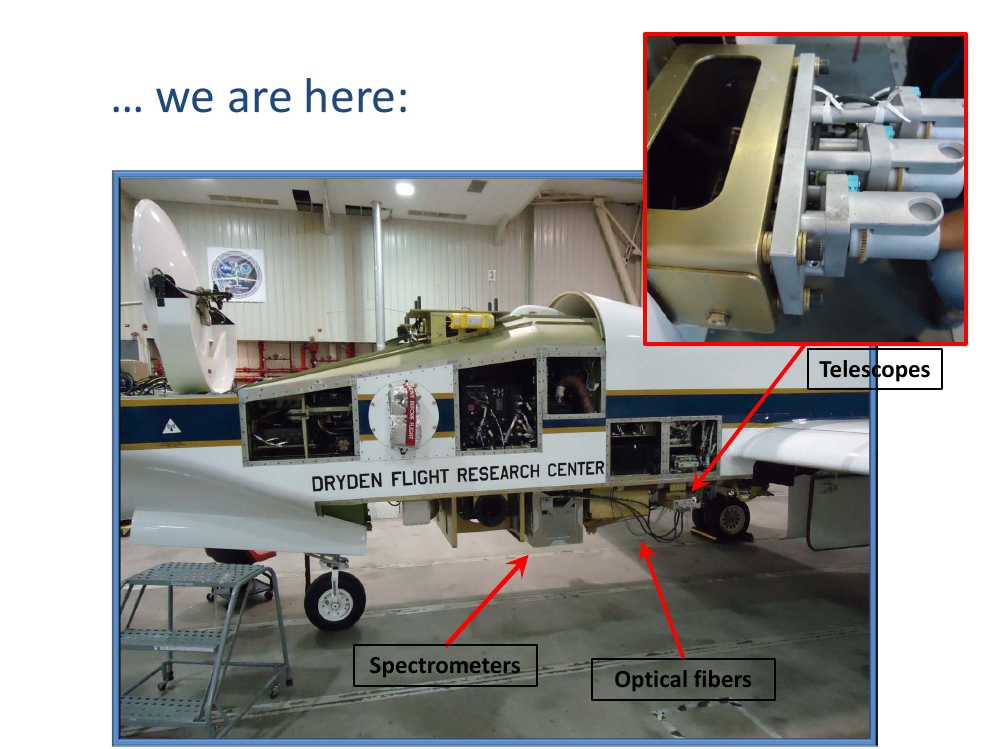It’s03:04 in the morning and, after having completed the last pre-flightoperations, the NASA ATTREX Global Hawk is now ready to fly. In fact, some ofthe payload instruments (such as DLH, HUPCRS, and mini-DOAS) require detailedfine-tuning and calibrations that can be performed only few hours before atakeoff. In the picture you can see the Global Hawk being pulled outside thehangar in preparation for takeoff which is scheduled at 07.00AM. Next blog willbe live from the Global Hawk Operation Center!
Author: Max Spolaor
ATTREX: Allow me to introduce: mini-DOAS!
Today, I would like to introduce you to my instrument: mini-DOAS!
You must know that scientists love to use acronyms to name instrumentsor even experiments (such as the ATTREX mission), so let me spell out for you whatmini-DOAS stands for: mini- Differential Optical Absorption Spectrometer. Ittakes its name from the well established spectroscopic technique (differential opticalabsorption spectroscopy) used to identify and measure amounts of differentgases. So what is mini-DOAS? Mini-DOAS is a remote sensing instrument whichuses scattered sunlight in the ultraviolet (UV), visible (VIS), andnear-infrared (NIR) spectral range to measure the concentration of atmospherictrace gases such as bromine monoxide (BrO), ozone (O3), nitrogen dioxide (NO2), oxygen dimer (O4), and water vapor. Thesetrace gases are very important because they contribute to the formation anddestruction of ozone in the atmosphere of our planet.
In the picture you cansee the mini-DOAS instrument integrated in the payload area of the NASA GlobalHawk. Briefly, the main components of our instrument are: a vacuum sealed box containingthe spectrometers and the optical fiber bundles connecting them to the telescopesmounted on the outside of the aircraft’s fuselage. It’s important to know thatthe telescopes have the ability to rotate so that they can point towardsdifferent viewing angles and therefore collect more information.
As you can see, theinstrument is now ready to fly and, indeed, we have already begun the countdownto tomorrow’s science flight!

ATTREX: An introduction to Max's blog
Hello! My name is MaxSpolaor and I am a UCLA/NASA Postdoctoral Scholar working on the NASA ATTREXmission as part of the Mini-DOAS instrument team.
Prior to joining the UCLA Department of Atmospheric and Oceanic Sciencesand the NASA Airborne Science Program I was a Research Fellow and InstrumentScientist at the Australian Astronomical Observatory in Sydney, Australia. Ireceived a Ph.D. in Physics in 2010 from Swinburne University of Technology in Melbourne,Australia and a B.Sc. in Physics and Physical Technologies from the Universityof Trieste in Italy.
In the next weeks, as the NASA ATTREX mission unfolds, I will make useof this blog to share with all of you my experiences, insights, hopes andexpectations of such scientific endeavor and, of course, to keep you posted onany discovery!
A video interview with Max Spolaor
